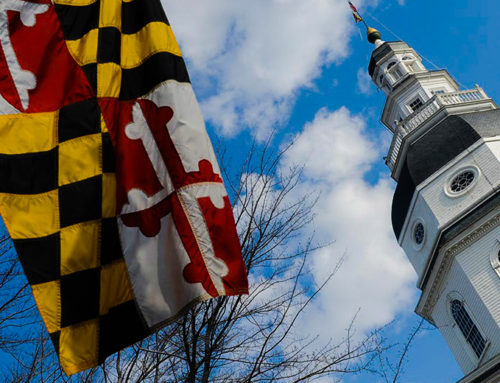View by Topic
Recent Articles
-
Energy Star: A Quiet Exit and a Bright Future Beyond GovernmentSaturday, June 7th, 2025
-
Congress Blocks California’s Gasoline Car BanSaturday, May 31st, 2025
-
EPA Will Keep Current Limits for “Forever Chemicals” in Drinking WaterSaturday, May 24th, 2025
-
Court Indefinitely Pauses SEC Climate Rule LitigationSaturday, May 17th, 2025
-
Maryland is About to Regulate Mold But is the Cart Before the HorseSaturday, May 10th, 2025
View by Month/Year
“Green Building Law Update” Headlines
Recent Articles & News from
Stuart Kaplow’s blog
at GreenBuildingLawUpdate.com
- Congress Blocks California’s Gasoline Car Ban: A Legal and Policy Analysis June 1, 2025
- EPA Will Keep Current Limits for “Forever Chemicals” in Drinking Water May 25, 2025
- Court Indefinitely Pauses SEC Climate Rule Litigation May 18, 2025
- Maryland is About to Regulate Mold: But is the Cart Before the Horse? May 11, 2025
Subscribe to the Green Building Law Update!
Stuart Kaplow brings his expertise and extensive experience to the table with his unique digital publication, "Green Building Law Update". Subscribers receive regular updates to keep them informed about important issues surrounding Environmental Law, Green Building & Real Estate Law, as well as the emerging demand for Environmental Social Governance (ESG).
Get fresh content through the lense of Stuart Kaplow's cutting-edge expertise, innovative commentary and insider perspective. Don't miss another issue! Subscribe below.
A Brief History of Zoning in Maryland
Zoning is a relatively new invention in Maryland. Zoning did not exist when the province of Maryland was first granted in 1634 and it was not until nearly 300 years later that the courts first upheld the enactment of a zoning ordinance in Baltimore City.
Comprehensive zoning has its origins in Germany in 1884. And while the preamble of the zoning enactment of Westphalia, Germany credits the first zoning for use to the French in laying out the boulevards of Paris in 1853, modern American zoning traces its roots to 1916 when Frank B. Williams brought back from Germany the maps and ordinances that became the drafting guides for New York City’s first comprehensive zoning enactment.
There were early land use laws in this country and as early as 1692 Massachusetts towns relegated the location of slaughterhouses to upwind nonresidential areas. Later precursors to modern zoning were fire districts, areas in certain cities where wooden buildings were prohibited. Baltimore City, in reaction to the Great Fire of 1904, enacted a fire limit district in 1905, and that fire limit district exists today.
It is widely agreed that the first comprehensive zoning ordinance in America was adopted by New York City in 1916 and was upheld in a state court decision in 1920.
Maryland’s first zoning ordinance was adopted in Baltimore City on May 14, 1923 (Ordinance No. 922). Within days of the enactment that classified Daniel Goldman’s four story dwelling on Park Avenue in a ‘residence district’, Goldman undertook to use the basement as a one man clothing repair and sewing shop. Goldman challenged the enactment and in 1925 the Maryland Court of Appeals struck down the zoning ordinance finding “it deprives property owners of rights and privileges protected by the Constitution of the State.”
Undaunted, six days later, on February 9, 1925, the Mayor and City Council enacted a revised zoning ordinance (Ordinance No. 334). In a challenge by Anita Tighe, complaining of denial of a permit to build a two-story stable in a residence district, on December 10, 1925, Maryland’s highest court again struck down the ordinance, on the basis of a denial of due process. Apparently anticipating the court, four days after that decision, the City fathers on December 14, 1925 again enacted a zoning ordinance, this time restricting the authority of the zoning commissioner (Ordinance No. 522).
Mrs. Tighe again challenged the effect of that enactment on her planned stable, but on April 8, 1926, in Tighe v. Osborne,the Maryland Court of Appeals upheld the validity of Maryland’s first comprehensive zoning ordinance.
Zoning was gaining popularity and by the time the U.S. Supreme Court upheld its constitutionality later that same year, in 1926, in Village of Euclid v. Ambler Realty Company,some 564 cities and municipalities across the country had enacted zoning.
The Maryland General Assembly endorsed the quickly spreading idea of zoning in the next legislative session (Laws of 1927, Chapter 705) and enabled Baltimore and other incorporated municipalities (having more than 10,000 inhabitants) to regulate the use of land, including through the use of districts, such matters as height, number of stories, size of buildings, residential density, location, and use of buildings.
Zoning may have only a brief seventy-some year history in Maryland, but today there is nary a topic that will excite someone as a proposal to change the zoning on an adjacent property.









